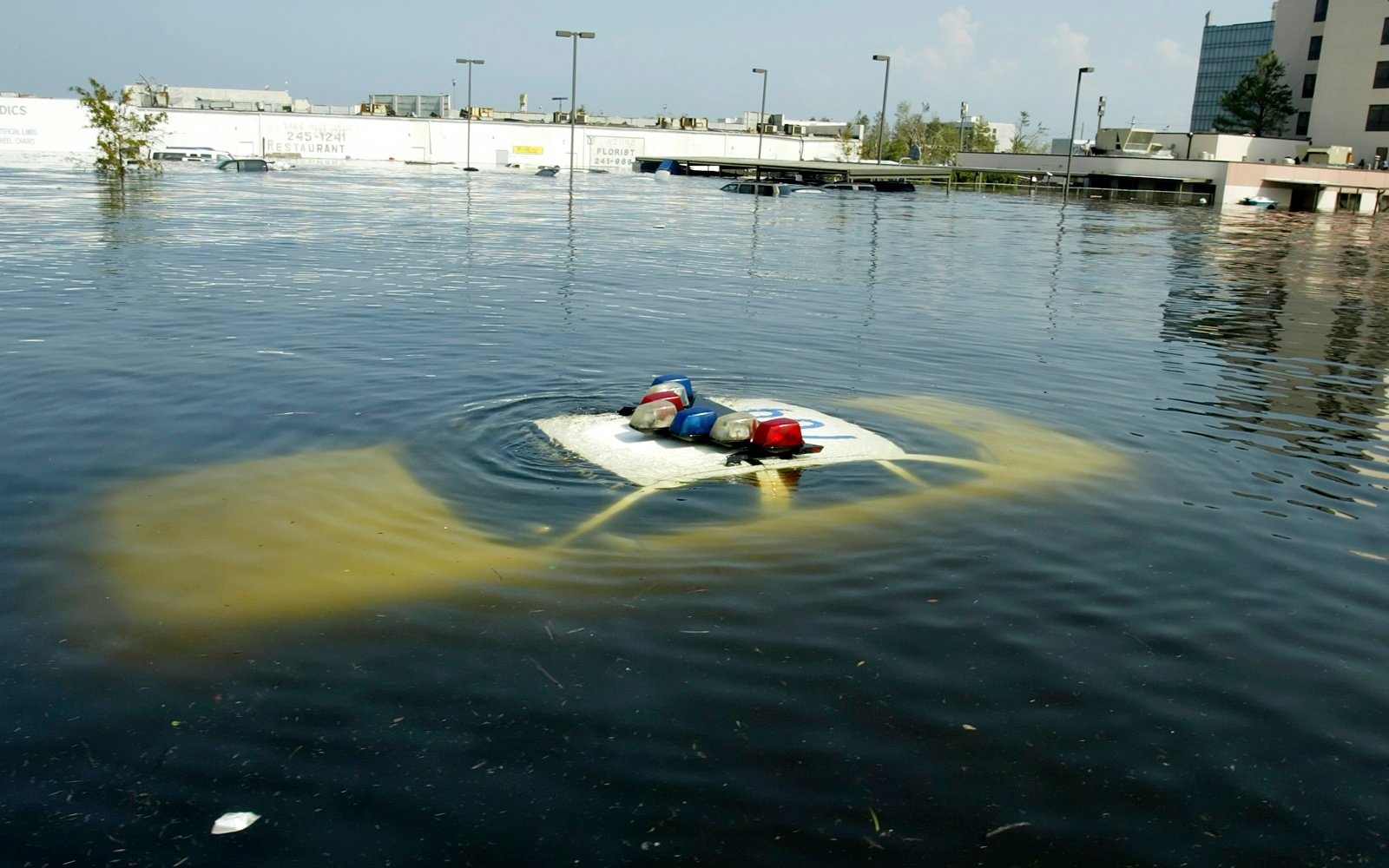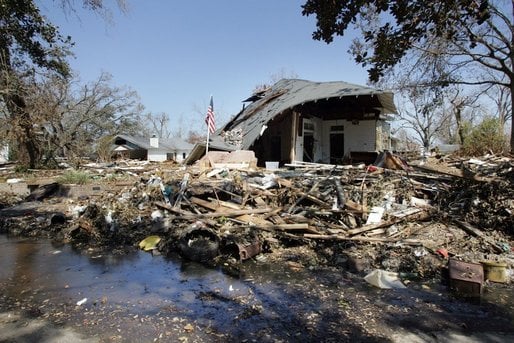The most costly and deadliest tropical storm of the 21th century hit the coastline of Louisiana. How this happened and why it left such a big devastation for the people of Louisiana is going to be topic of this blog!
You are probably wondering why I am engaging myself with a hurricane which occurred more than a decade ago. Well, our fourth semester project as Delta Management student focuses on the Mississippi Delta in Louisiana. And one major topic is the infrastructure of Louisiana in connection with natural disasters and how they did and could also now affect the present coastline.
How do hurricanes form?
As moist air rises from warm waters into the shifting winds above, it is replaced by cooler air. The cooler air then will warm up and start to rise. This particular weather system then grows in size and as it rotates it sucks up more and more moisture from the surface of the ocean below and becomes its own living force. As for Hurricane Katrina it formed over the warm waters of the Atlantic Ocean.
Landfall
On August 29, 2005 Hurricane Katrina made landfall as a category 3 storm in southeast Louisiana. An estimated 1,833 people died in the hurricane and millions others were left homeless along the Gulf Coast and New Orleans. The tropical storm caused damages worth 108 billion dollar, according to the National Oceanic and Atmospheric Administration (NOAA).

A police car is submerged in New Orleans after Hurricane Katrina hit the area.
What went wrong?
The majority of death and damage was due to protection failures in New Orleans. Over fifty breaches were reported. The levee and floodwall failures led to an opening for the water to intrude into the parishes and neighbourhoods of New Orleans. Over 80% of the city was flooded. The protection system failure was caused due to a decision of the U.S. Army Corps of Engineers (USACE) to use shorter steel sheet pillings in order to save money. Another major cause for several death was the mismanagement and delayed response for relief efforts of the Federal Emergency Management Agency (FEMA) which led to extensive looting, violence and shooting against rescuers and murder. Many people also died because of their own decision to stay and barricade themselves until the hurricane was over. Although the government announced a storm to hit the shore many decided to stay. Few of the people were just too poor to leave or did not have a vehicle to evacuate in time or were certain that the storm warning did not need to be taken seriously. However, these decisions claimed many lives.
MR-GO
MR-GO is an Outlet Canal which was constructed by the USACE to provide a shorter route between the Gulf of Mexico and New Orleans' inner harbour industrial canal. Unexpected the MR-GO channeled Hurricane Katrina's storm surge right into the heart of New Orleans. Thus contributing greatly to the failure of the protection system.
 Highly damaged house due to the force of Hurricane Katrina
Highly damaged house due to the force of Hurricane Katrina
Today
Many protection measures have been implemented to avoid a huge impact like Hurricane Katrina left behind. MR-GO has been secured with a permanent storm surge barrier in 2009. But as for some neighbourhoods the houses have not been restored yet. Some of the houses will never be habitable again due to the sea water, which was stuck in some areas for weeks. Authorities are doing everything to avoid such disasters to happen again, by implementing short term and long term safety measurers. The short term measures will decrease the direct impact of storms (adaptation measures), while long term measures are more focused at decreasing the growth of such disasters by slowing down (mitigate) climate change.
What do you think of this disaster? Let us know in the comment section below. Interested in other blogs? Click here to get to our main web page.
References:
- CNN. (August, 2017) Hurricane Katrina Statistic Fast Facts. Retrieved from https://edition.cnn.com/2013/08/23/us/hurricane-katrina-statistics-fast-facts/index.html
- The Guardian. (August, 2017) New Orleans under water: 12 years after Katrina, officials can't get it right. Retrieved from https://www.theguardian.com/us-news/2017/aug/15/new-orleans-flooding-rain-water-louisiana
